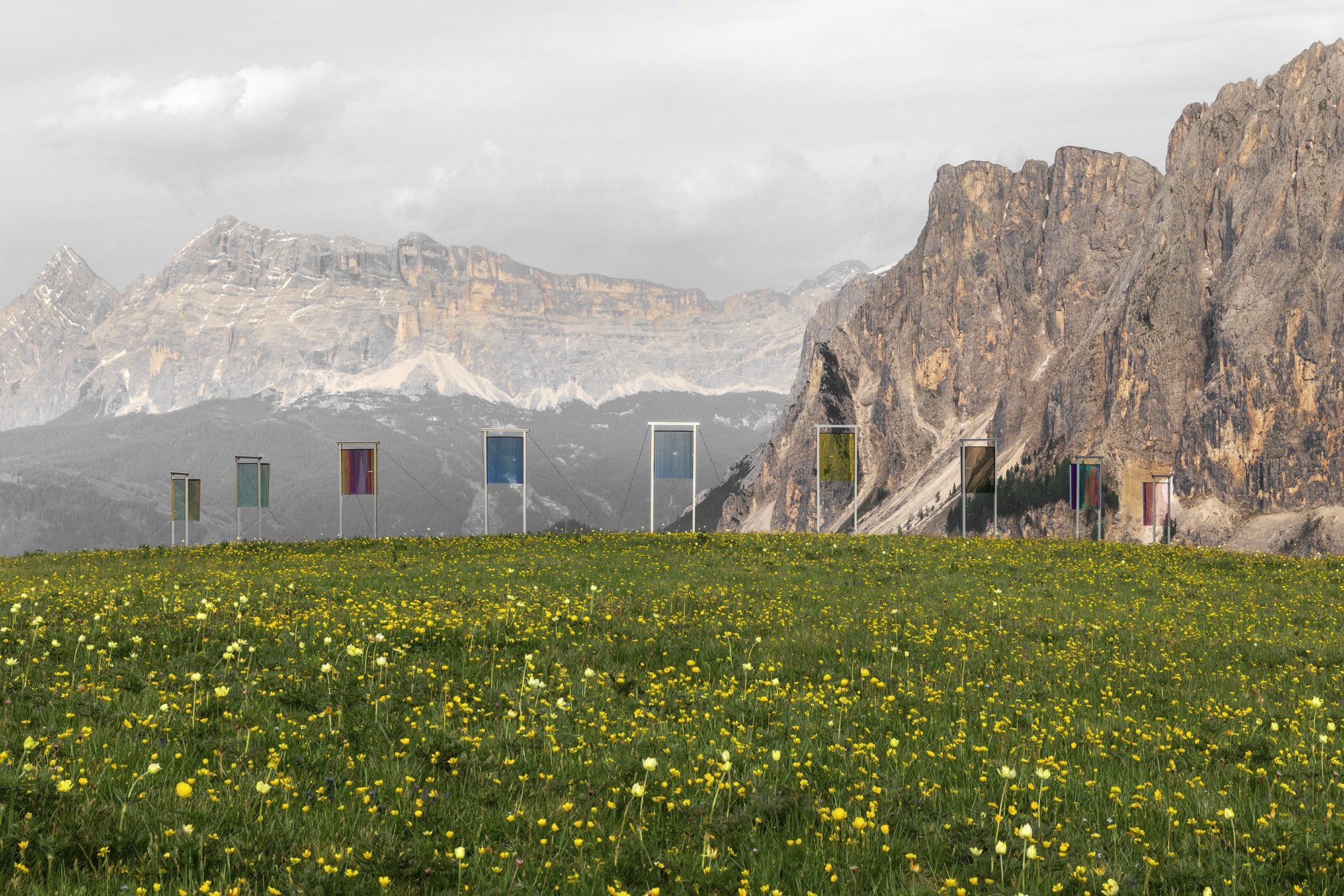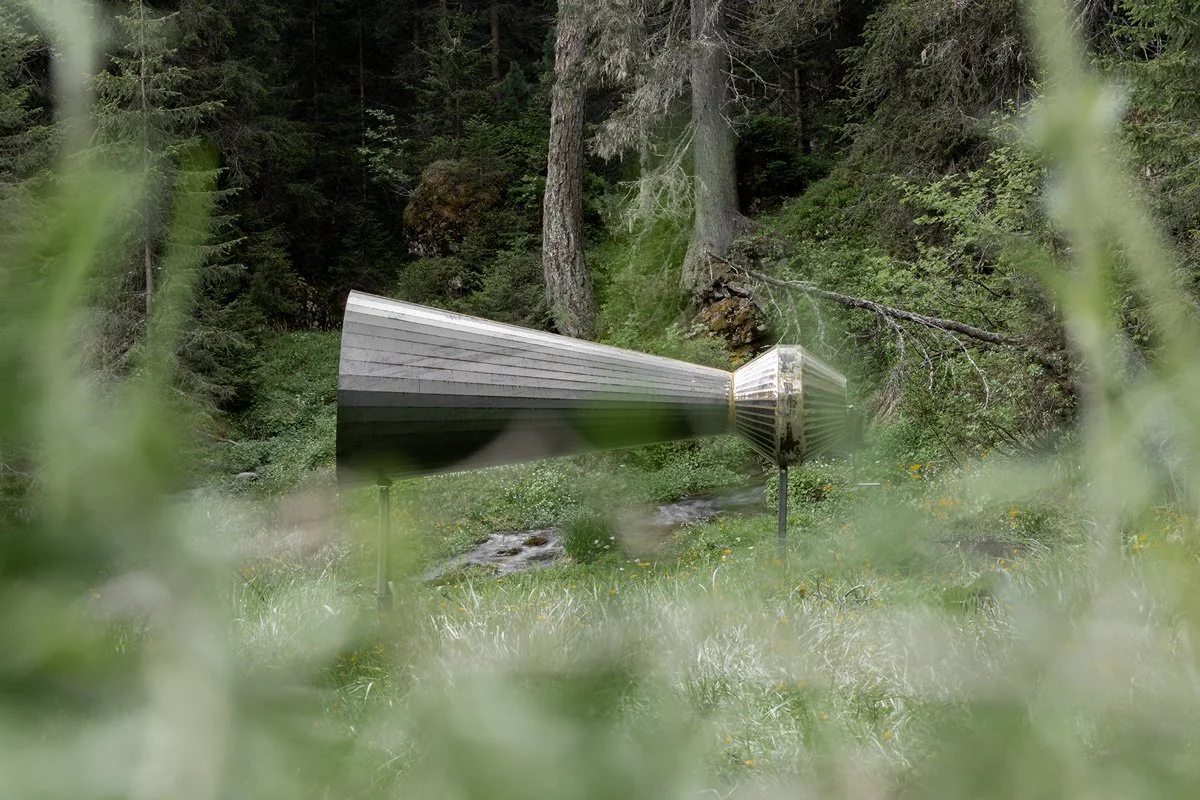.arexport
Auricchio Coen Knopp
Nine stations with colored filters alter the perception of the panorama overlooking the marvelous Crep dlas Dodes, Piz Somplunt, and Piz Duleda—the peaks that separate the Longiarù valley from the Antersasc valley. We typically find these chromatic effects in smartphones (on Instagram, for example, they bear the names of iconic cities like New York, Tokyo, Paris, Rio de Janeiro) or in photo post-production programs. “.arexport” is, in fact, the extension for images modified with digital effects. Bringing these filters into the real world as an art installation invites the public to reflect on the immaterial tools that modify real existences, the perception of them, and how millions of people publicly share every detail. Placed in a location that needs no alteration, the artwork prompts a further question: what needs does the desire to sugarcoat the images of our lives address?







Exhibit place Medalghes
We have already told you about the transhumance of animals that are led from La Valle to the pastures of Fanes via the St. Anthony Pass. Here, however, we tell you about another type of procession that involves only male people from the entire Badia Valley.
Every three years, over the Poma Pass, men from the twelve villages of the valley walk in a procession to the ancient bishop’s seat of Sabiona, today a monastery, located above the small village of Chiusa in the Isarco Valley. The procession is called ‘Jeunn’ and brings together around 1,000 pilgrimers in a three-day walk, of which the last one took place between the 2nd and 4th of June 2022.
The pilgrimage, which crosses valleys and mountain ridges, is a centuries-old tradition and leads the faithful from Val Badia on a three-day hike. Some pilgrims arrive in the neighbouring valley, Funes, by crossing the Poma Pass, at 2,293 metres above sea level. You can get there by crossing the Munt d’Adagn path, which is a beautiful grassy plateau (also perfect in winter for snowshoeing or ski mountaineering), where you will also find a couple of alpine huts, with the wonderful peaks of the Puez Odle group in the background. The gentle undulation of these meadows, like those of Putia, is the result of erosive phenomena that, over millions of years, have smoothed out the sandstone and Bellerophon layers of which they are composed.
The area is also the stage for a number of stories about some interesting characters: the first is Franz Schlüter, a Dresden merchant who fell in love with the Dolomites. In 1896 he bought the land and then paid for the construction of a building which is now the Rifugio Genova. The inauguration was in August 1898. A century later, the second interesting person came along: Jürgen König, a German journalist and author. He wrote the book ‘Medalges. Ein Jahr allein in den bleichen Bergen’ after spending an introspective experience of detachment from society in Medalges. For one year, in 1989, he was living in the company of only his dog Schnaps in a hut without electricity, services, radio, television or telephone. The book was later made into the film ‘Im Atmen der Bergen’ in 1998. Jürgen König died, aged 79, on the 24th of June 2022. He is remembered fondly.
Also, just beyond the Poma Pass, continuing towards Putia, you can reach the Alta Via Günther Messner (for experienced hikers only), dedicated to Reinhold Messner’s brother. It was on these very mountains that the Messner brothers, originally from the neighbouring Val di Funes, learned to climb.












